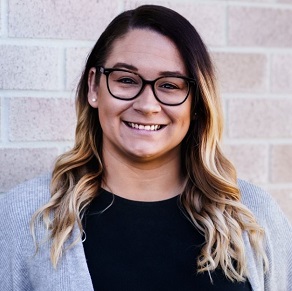There has been a growing interest in the benefits of yoga to help individuals with anxiety, depression, and trauma recovery.
The evidence regarding yoga as an intervention for the effects of trauma, as well as the mental health symptoms and illnesses often associated with trauma, is encouraging but it is preliminary. This is not to say it is not effective; in my experience, and that of a growing number of therapists, it is a useful tool within session as well as in addition to talk-based therapies.
How Does Yoga Help Trauma Victims?
Individuals who develop posttraumatic stress disorder (PTSD) following a traumatic event, often find it difficult to relax or self-regulate, due to impacts of the traumatic experience on their nervous system. As you can imagine, this then has an expansive impact on many areas of their lives. Unfortunately, these physiological effects are too often long-lasting, leaving a trauma survivor feeling disconnected or out of control of their body, and these effects can be resistant to standard therapeutic approaches.
When healing from trauma one of the things that needs to be learned is to self-regulate again, and yoga for thousands of years has been a practice that helps calm the mind and body, and increase body awareness.
More recently, researchers have studied yoga (including meditation, relaxation, and physical postures) and have found that it can:
- reduce autonomic sympathetic activation (eg the fight/flight response);
- reduce muscle tension;
- reduce blood pressure;
- improve hormones;
- decrease physical and emotional distress;
- increase quality of life.
For these reasons, yoga is a promising adjunct to therapy for addressing pervasive symptoms associated with PTSD.
What to Expect from Yoga in a Therapy Session
If you have ever attended a yoga class before and are feeling a bit apprehensive of how yoga practice translates into a therapy session, remember firstly, most mental health professionals are not trained yoga teachers so you can most likely rule out any advanced poses and elaborate instruction!
In my work with clients, it involves invitations (you are encouraged to say no if you are not comfortable with it) during your therapy session: for example, to get as comfortable as possible; to notice what is happening in your body; to take some mindful breaths or movement to help regulate the body when speaking about things that are perhaps hard to express or put into words without becoming too distressed and overwhelmed.
In addition, if attending a yoga class is something you are open to trying, I recommend looking for a yoga teacher/instructor that is trauma sensitive and seeing how it feels for you.
 Author: Samantha Sheppard, B Psych (Hons).
Author: Samantha Sheppard, B Psych (Hons).
Samantha is a registered psychologist with experience working with children and adolescents (and their families), young adults and adults. Samantha empowers others with their mental health using a non-judgemental, compassionate approach, and particularly resonates with a social and emotional wellbeing framework.
To make an appointment with Samantha Sheppard try Online Booking. Alternatively, you can call M1 Psychology Loganholme on (07) 3067 9129.
References:
- Emerson, D., Sharma, R., Chaudhry, S., & Turner, J. (2009). Trauma-sensitive yoga: Principles, practice, and research. International Journal of Yoga Therapy, 19, 123-128. doi: 10.17761/ijyt.19.1.h6476p8084l22160
- Macy, R. J., Jones, E., Graham, L. M., & Roach, L. (2018). Yoga for trauma and related mental health problems: A meta-review with clinical and service recommendations. Trauma, Violence, & Abuse, 19, 35-57. doi: 10.1177/1524838015620834
- Van der Kolk, B. The Body Keeps the Score: Brain Mind and Body in the Healing of Trauma. Viking Press, 2014.
- Van der Kolk, B., Laura, B. A., West, J., Rhodes, A., Emerson, D., Suvak, M., & Spinazzola, J. (2014). Yoga as an adjunctive treatment for posttraumatic stress disorder: A randomized controlled trial. The Journal of Clinical Psychiatry, 75, 0-0. doi: 10.4088/JCP.13m08561